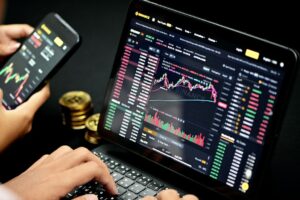Understanding Forex Margin: A Beginner’s Guide
Forex trading can be an exciting and potentially lucrative investment opportunity. However, it is important for beginners to have a clear understanding of certain concepts and terms before they dive into the world of forex trading. One such concept is forex margin.
What is Forex Margin?
Forex margin is essentially a loan provided by a broker to a trader. It allows traders to control larger positions in the market with a smaller amount of capital. In other words, margin trading allows traders to magnify their potential profits, but it also exposes them to higher risks.
Margin is expressed as a percentage of the full position size. For example, if a trader wants to open a 100,000 unit position and the margin requirement is 1%, the trader would need to deposit $1,000 as margin.
How Does Forex Margin Work?
To understand how forex margin works, let’s consider an example. Suppose you have a trading account with a balance of $10,000, and you decide to open a position in EUR/USD with a leverage of 50:1. The current exchange rate for EUR/USD is 1.1000.
With a leverage of 50:1, you can control a position size of $500,000 ($10,000 * 50) in the market. However, you are required to deposit a margin of 2% ($10,000 * 2%) which amounts to $200.
So, with a $10,000 trading account balance and a $200 margin, you can open a position worth $500,000. This is the power of leverage provided by forex margin.
It is important to note that while leverage can amplify potential profits, it can also amplify potential losses. If the market moves against you, your losses will be magnified in proportion to the leverage used.
Margin Call and Stop Out Levels
Forex brokers often have margin call and stop out levels to protect both the trader and themselves. A margin call is a warning from the broker that the trader’s account equity has fallen below a certain level. At this point, the trader must deposit additional funds or close some of their positions to maintain the required margin level.
The stop out level is the point at which the broker will automatically close the trader’s positions to prevent further losses. This happens when the account equity falls below a certain threshold, often set at 50% of the required margin.
Different brokers have different margin call and stop out levels, so it’s important to understand these levels before starting to trade and to ensure that you have enough margin to support your trades.
Managing Forex Margin
Managing forex margin is crucial for risk management. Here are a few key tips for managing forex margin effectively:
1. Understand leverage: Be aware of the leverage offered by your broker and understand the potential risks involved.
2. Use stop-loss orders: Place stop-loss orders on all your trades to limit potential losses. A stop-loss order is an order placed with your broker to automatically close a position once it reaches a certain price level.
3. Monitor your account: Regularly check your account equity and margin levels to ensure you have sufficient funds to support your positions. This will help you avoid margin calls and stop out levels.
4. Practice risk management: Only risk a small portion of your trading capital on any single trade. This will help you avoid catastrophic losses.
Conclusion
Forex margin is a powerful tool that allows traders to control larger positions with a smaller amount of capital. It offers the potential for higher profits, but also exposes traders to higher risks. Understanding how forex margin works and managing it effectively is essential for beginner traders. By practicing good risk management and being aware of margin call and stop out levels, traders can navigate the forex market with confidence.





